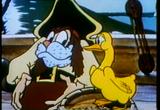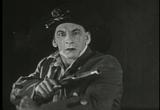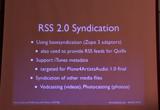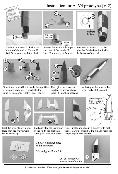Some random morsels from the Internet Archive collections:
1. Paul Otlet (pronounced ot-LAY; 1868-1944) is considered the “father” of information science. A Belgian lawyer and visionary, he aspired to create a central repository of all human knowledge. From the 1920s until the Nazis took Brussels, he began to build such a collection, called the Mundaneum, which housed a massive catalog made up of millions of 3×5 index cards. Each card contained data pulled from books for indexing and reuse. Otlet is considered by some to be the forefather of the World Wide Web. His 1934 magnum opus Traite de Documentation (Treaties on Documentation: The Book of the Book) has yet to be translated into English, but the Archive has digitized a collection of his essays.
In the Archive’s Moving Image collection you’ll also find a 1998 documentary about Otlet, made for Dutch television and entitled Alle Kennis van de Wereld (“All the Knowledge of the World”). The documentary (23 min) is narrated by Boyd Rayward, Otlet’s biographer. It is in both English and French (and, unfortunately, has no subtitles).
(See also Alex Wright’s 6/17/08 New York Times article, “The Web Time Forgot,” which discusses Otlet’s Mundaneum.)
2. Arabian Nights with twenty color illustrations by the renowned French illustrator Edmond Dulac (1882-1953). Published by Hodder & Stoughton (1907).
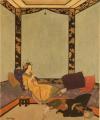

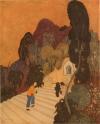
3. Pete Seeger interviewed by Tim Robbins, “The Ballad of Pete Seeger,” an original radio documentary celebrating Pete Seeger’s life and times, and featuring a candid conversation with actor Tim Robbins and historic audio from the Pacifica Radio Archives. 4 DVDs and 2 CDs
4. The most popular item in the Live Music Archive, with nearly 2.5 million downloads, is OfARevolution (O.A.R.) Live at Madison Square Garden on January 14, 2006. This Archive volunteer had never heard of the group before today, but according to the New York Times review of the 2006 show, the Columbus, Ohio, band has achieved success “by playing concerts nonstop and by encouraging fans to share recordings.”
5. Beethoven’s Symphony # 6, Pastoral.
Beethoven’s Symphony # 6, Pastoral.
Legendary Italian conductor Arturo Toscanini conducting the BBC Symphony Orchestra. Recorded over several sessions from June-October 1937 at Queen’s Hall, London. Transferred and restored from the original 78 RPM RCA Victor set M-417 by Bob Varney.
6. Bach’s Air on the G String and the estimable Sixth Suite for Unaccompanied Cello make up concert 22 (Bach’s Songs of Strings) of the podcast collection of the Isabella Stewart Gardner Museum in Boston. This entire collection of 22 concerts is terrific.



